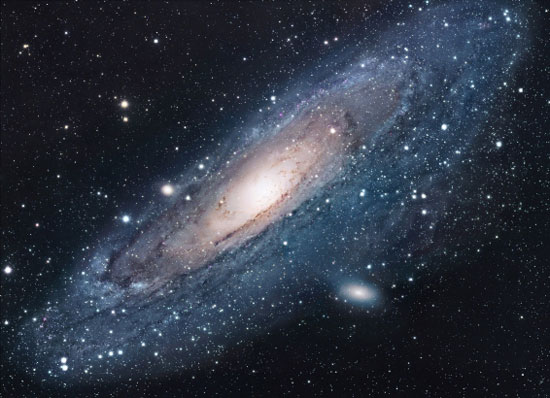Discover the dark age of the universe
That is the key to keep the long-standing secrets that the earth science is pursuing .
>>>Has the black hole ever dissipated?
The universe once experienced a dark age, which was the era when darkness enveloped before the first stars and galaxies appeared. Currently, knowledge of the mysterious period is too small, and this stimulates the scientific world to discover.'The dark night represents our origin, when the first stars form and form heavy crystalline elements so the universe today' , Space.com quoted the astrophysicist. Abraham Loeb, Dean of Harvard's Astronomical Department (USA).
Researchers are developing new tools that are expected to decipher this period.
Light before school night
Before looking at the past, astronomers estimated the universe was 13.7 billion years old. According to Loeb expert, at the beginning, the universe was so hot that all atoms divided into positive and negative charge cores. These ions prevent any light from moving freely. About 400,000 years after the birth of the Big Bang, the temperature began to diminish enough for the ions to merge back into atoms, and then new light appeared. However, after that, the universe fell into a dark period, there was no light shining.

The current models theorize that the first galaxies formed about 100 million years after the Big Bang, marking the end of the dark era. The process of star and galaxy formation gradually takes place until all hydrogen and helium atoms, which make up the majority of the universe, once again fall into ionization, this time due to the activation light, entering 500 million years from the beginning.
The secret waiting for the answer
Further research on the mysterious era of the universe is expected to help answer many questions that have not been answered. For example, a giant black hole is present at the center of galaxies where does it form? According to expert Loeb, the galaxy is containing a black hole 4 million times the mass of the Earth, but this black hole has not penetrated with some seniors in other galaxies, with mass. billions of times the sun. Specifically, the ancient galaxy ULAS J1120 + 0641 has a central black hole 2 billion times the sun, and this galaxy appeared in the 770 million year after the Big Bang event. This shows that it does not take long to produce a giant black hole , causing experts to question the original seed that made those monsters.
Another question is the impact of dark matter, believed to account for about 85% of cosmic matter, to the formation of the first galaxies. How do early stars look like, bigger or smaller than their current descendants?
Key
To investigate the universe without light, experts are trying to research and search for the first stars and galaxies. There is evidence that the light of these ancient celestial bodies takes a long time to reach the earth , so the investigation of their whereabouts is possible. Another strategy is to look at the "scars" that early stars and galaxies created for the clusters of hydrogen gas around them. There are a number of telescopes in the world that do this, like the Murchison Widefield Array research station in Australia, Low-Frequency Array (spread along Europe) .
Besides, experts can also investigate the first galaxies by searching for X-ray images of central black holes, through NASA's Chandra X-ray satellite. In the future, it is anticipated that experts will eventually be able to detect gravity waves escaping when black holes of the first galaxies merge together.
- Discover the existence of dark material?
- The mystery of dark energy
- Detecting mysterious dark flows in the universe
- Chinese satellites discover mysterious signals in the universe
- Entering the universe 'dark'
- What is dark energy?
- Decipher the mystery of dark matter
- Found signs of dark matter
- Dark matter may be behind the universe's death
- Europe will seek the secret of the universe
- 10 mysteries in the universe
- Detecting dark matter fibers
 Van Allen's belt and evidence that the Apollo 11 mission to the Moon was myth
Van Allen's belt and evidence that the Apollo 11 mission to the Moon was myth The levels of civilization in the universe (Kardashev scale)
The levels of civilization in the universe (Kardashev scale) Today Mars, the sun and the Earth are aligned
Today Mars, the sun and the Earth are aligned The Amazon owner announced a secret plan to build a space base for thousands of people
The Amazon owner announced a secret plan to build a space base for thousands of people